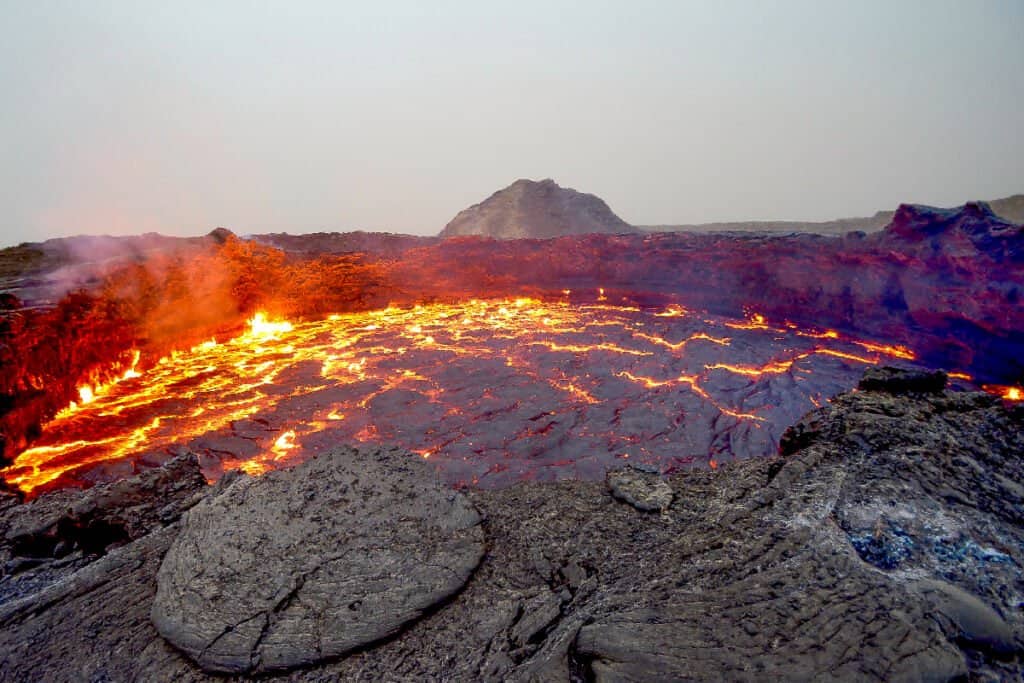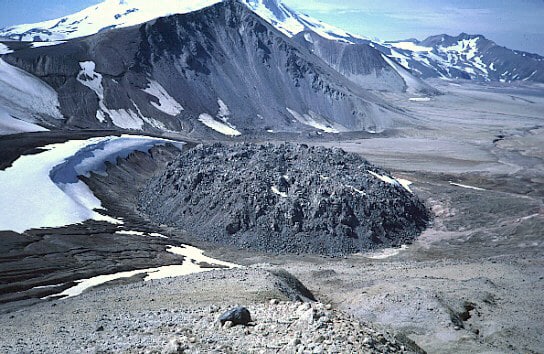Although the cosmos is blessed with many magnificent things to see, ranging from strategically placed oceans, seas, mountains, valleys, and gorgeous creatures, Mother Earth has repeatedly launched a series of natural disasters to her kids. Surprisingly, these catastrophic events like the volcanic eruptions and wildfires kicked off naturally but became intense with various human activities that deteriorated the world into what it is today. Intriguingly, only a handful of the world’s population witnessed these natural disasters firsthand, but a large percent of the world’s population hears this heinous tragedy on the news.
The fear of these mind-boggling volcanic explosions has been troubling over the years, and several people now wonder when the next one will occur. Are we due for one? Let’s take a trip down memory lane to find more facts about past volcanic eruptions in order to know when we are due for another massive eruption.
What is a Volcano?

An opening in the earth’s surface through which magma, volcanic ash, and gases escape is a volcano.
©mbrand85/Shutterstock.com
A volcano is a crack or opening in the earth’s surface through which magma, volcanic ash, and gases forcefully escape explosively. Specifically, they are most commonly seen where tectonic plates collide or divide, but they can also happen in the middle of the plates due to volcanic hotspots. Oddly, a glowing avalanche, which occurs when newly erupted lava slides down the flanks of a volcano, is the most deadly sort of eruption. It can travel swiftly and reach temperatures of up to 1,200 degrees Fahrenheit.
How Do Volcanoes Erupt?

©Thorir Ingvarsson/Shutterstock.com
The process of volcanic eruption is often more mysterious than we imagined. Surprisingly, it is so hot deep underneath the earth that some rocks slowly melt and turn into a thick, flowing substance known as magma. Intriguingly, magma rises and gathers in its chambers, and since it is more lightweight than the solid rock surrounding it, it makes its way as lava to the earth’s surface through vents and fissures.
Are all Volcanic Eruptions Explosive?
It is of uttermost importance to mention that not all volcanic eruptions are explosive. However, the magma’s composition determines how catastrophic one can be. Volcanic eruptions can fall under six major types: Icelandic, Hawaiian, Strombolian, Vulcanian, Pelean, and Plinian. But comparing the intensity of volcanic explosions, we will say that Hawaii’s volcanic eruptions are not as massive as the rest because the magma comes in thin and runny and gases escape while causing a few casualties. On the other hand, the eruption of Mount St. Helens in Washington State is more intense. The gases in this type of eruption do not escape with ease because the magma is thick and sticky, and many casualties are often reported when there is an explosion.
Where Did The Largest Volcanic Eruption Happen?

The largest volcanic eruption of the 20th century occurred in what is now Katmai National Park and Reserve.
In 1912, in the small city of Novarupta, on the Alaska Peninsula, in what is now Katmai National Park and Reserve, the world’s greatest eruption of the twentieth century occurred. Interestingly, an estimated 9 cubic inches of magma erupted in an explosive 60-hour eruption, around 30 times the volume released by Mount St. Helens (Washington) in 1980. Surprisingly, scientists didn’t explore the site until 1918, when they discovered volcanic deposits and boiling fumaroles in the Ukak River valley due to the eruption’s distant remote location. They named it the “Valley of Ten Thousand Smokes.”
What Were The Last Big Volcanic Eruptions?
No doubt, many big volcanic eruptions have happened over the years. However, on June 26, 2019, Ulawun erupted in Papua New Guinea, sending an ash plume to at least 63,000 ft in the surrounding towns. Sadly, other large eruptions occurred on August 2 in the same year, and on December 9, 2019, in New Zealand, a phreatic eruption launched rock and ash into the air, killing 22 of the 47 people on the island. In the Philippines in 2020, a phreatic eruption from the main crater spewed ashes to Calabarzon, Metro Manila, Central Luzon, and Pangasinan. Unfortunately, 39 people were killed.
Are We Due For Another Eruption?
Volcanoes do not work in predictable ways, and their eruptions do not follow predictable patterns. However, it is good news to say that we would no longer witness volcanic eruptions in parts of the United States since the geologic processes that created volcanoes in the eastern United States millions of years ago no longer exist. Interestingly, plate tectonics has insulated the eastern United States from global tectonic features that trigger volcanic activity. With this, fresh volcanic activity is not likely to occur soon. Nevertheless, it is still human nature to fear the unknown since we still see traces of ancient volcanic eruptions even in this present era.
How Many Active Volcanoes Are There On Earth?
There are around 1,350 potentially active volcanoes on the planet, but only 500 of the 1,350 volcanoes have erupted. Many of these volcanoes run along the Pacific Ocean’s rim and are collectively called the “Ring of Fire”. Unlike the United States, Hawaiian Volcanoes are well known for their “hotspot,” situated near the ring’s center. Interestingly, there are 161 potentially active volcanoes in the United States and its neighborhoods.
What is the Ring of Fire?
Known to be the world’s most volcanically active tract, the ring of fire describes the belt where most earthquakes and volcanic eruptions occur.
Is It Possible For a Volcanic Eruption to Trigger a Second Eruption Simultaneously Elsewhere?
Fascinatingly, some volcanic vents are thought to be part of a larger volcanic complex. Still, there is no conclusive evidence that an eruption at one volcano can trigger a second eruption in any other part of the continent. However, a few previous occurrences of volcanic vents erupted simultaneously at intervals. Surprisingly, volcanoes that share magma reservoirs can sometimes cause unrest in each other. For example, the 1912 eruption of Alaska’s Novarupta volcano was triggered by a magma reservoir miles away beneath mount Katmai. Fortunately, it did not explode; rather, it collapsed into the emptied magma chamber below after the eruption of Novarupta. But, Tavurvur and Vulcan cones within the Rabaul caldera in Papua New Guinea erupted almost simultaneously in 1994.
The photo featured at the top of this post is © fboudrias/Shutterstock.com
Thank you for reading! Have some feedback for us? Contact the AZ Animals editorial team.






